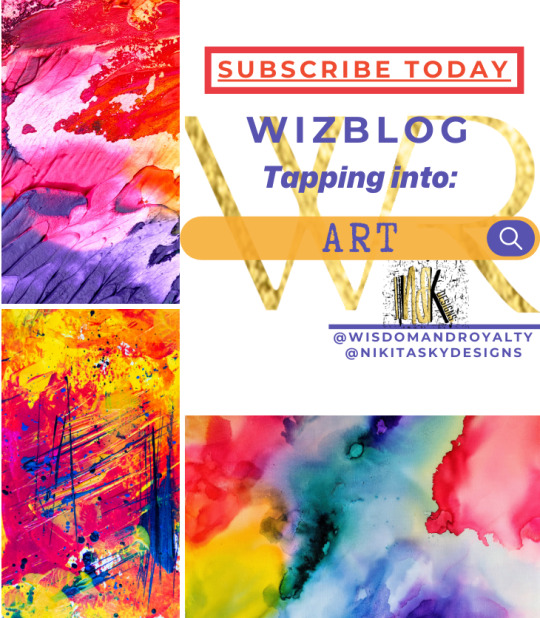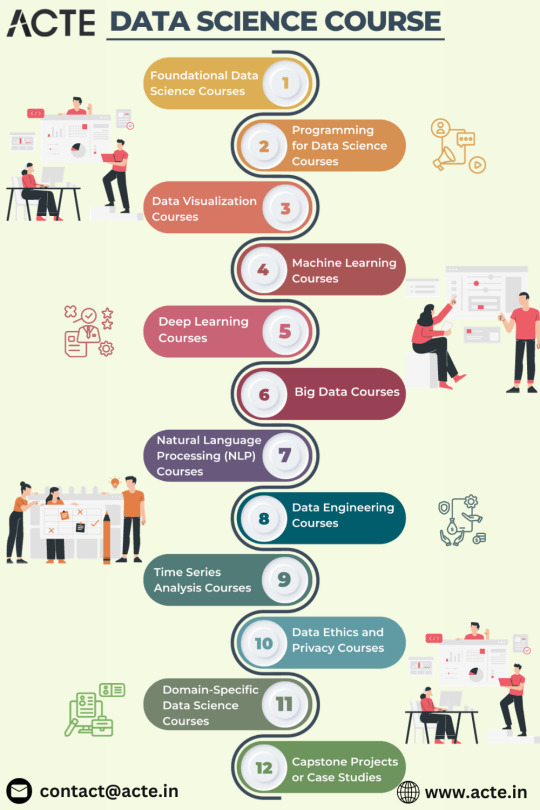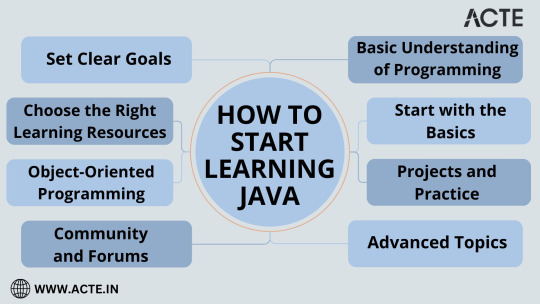#Fundamental art principles for beginners
Text
7 Essential Drawing Tips for Novice Creators
Unlock your inner artist with these essential drawing tips for beginners! 🎨✏️ Learn fundamental techniques and build your creative confidence. #DrawingTips #ArtForBeginners #WizBlog #Art
Oh, the absolute joy when a child picks up a pencil and starts scribbling away! It’s truly heartwarming to see them trying their best to express themselves through their drawings. Drawing is an incredibly enjoyable and accessible skill that brings so much fun and happiness. And the best part? It doesn’t have to cost a fortune – it’s an affordable hobby that can be enjoyed by all! – Forget fancy…

View On WordPress
#Art#Art techniques for newcomers#Artistic skills for starters#Beginners&039; guide to drawing#Building drawing confidence#Drawing tips#Easy drawing methods for newbies#Fundamental art principles for beginners#Learning to draw for beginners#Pencil drawing basics#Sketching advice for novices#Step-by-step drawing guidance#tap into your creativity#wisdom and royalty#WizBlog
1 note
·
View note
Text
THE MAJOR ARCANA (The Beginners series) Tarot Keywords ✨♾️
Tip from personal experience- Before reading the meanings behind the cards, tap into your intuition and listen to what it tells you. You can always interpret your cards even if they don't match the traditional meanings. Make a bond with your decks, it will help you to have a more smooth Tarot journey. Always thank the cards and the Guides/Spirit Team/The Universe after you are done reading. Try to cover your head while doing the readings to prevent any additional info from downloading into your Crown Chakra.
I have also added my own interpretations of the cards based on personal experiences along with the traditional meanings. Do not copy the words and reblog if you want more posts like that :)
WHAT IS THE MAJOR ARCANA?

(Pic credits to the owner)
They are basically representing our most fundamental issues at the Universal level. They deal with the issues of our own current needs and issues. Each of the Major Arcana represents a distinct principle, law, power, or element in Nature.
There are 22 Major Arcana Cards named below :
0: The Fool- represents the young and a fresh new energy. A New Beginning.
1: The Magician- The Master Manifestor/Someone having the capabilities and all the tools to manifest anything they want.
2: The High Priestess- The healer and The feminine power. Trusting in your inner guide and intuition.
3: The Empress- The Divine Feminine(regardless of gender), Nurturer, and Creative covering all the aspects of the feminine spirit.
4: The Emperor- The Divine Masculine (regardless of gender), Provider, and caretaker covering all the aspects of the masculine spirit.
5: The Hierophant- The teacher figure following traditional rules and ceremonies. Has a keen interest in knowledge and an unfulfilled thirst for information. The one who seeks.
6: The Lovers- Traditional card of Love and physical attraction. Could be inner or outer love. Love, choice, and commitment. Quest for eternal love.
7: The Chariot- The achiever and believer. Being determined to always move forward with both the Yin and Yang energies balanced, sticking to the right path.
8: Strength- Inner strength and courage. Has the self-awareness to deal with every situation. Can tame the inner Devil.
9: The Hermit- The Isolator and seeking for some solitude in silence. Going within to find the answers to every question.
10: The Wheel of Fortune- Completion of a cycle. Destiny and timings at their play. The only constant is change itself. Cycles repeat themselves until the lessons are learned.
11: Justice- Harmony and honesty will be served in the situation. Nature's laws are at play. Learning how to make rational decisions.
12: The Hanged Man- Learning about new perspectives. Looking at everything with a different viewpoint. Changing priorities and doing the opposite of what is expected.
13: Death- Not the literal Death card. It means a Rebirth and Transition. Change is needed. New beginnings could be on the horizon after letting go of the past.
14: Temperance- Learning the art of balancing the emotions in every situation. Practicing self-control and moderation. Only moderation will create balance.
15: The Devil- The illusion controlling the rational mind. The ego is bigger than the higher self's knowledge. Sexual temptations and materialism are blinding. Being utterly obsessed.
16: The Tower- Hitting the rock bottom. Not expecting the sudden changes because of external disruptions. What was built will be broken someday if it is built based on lies and deception.
17: The Star- Ideal love and inspiration. Could also represent your soul tribe and star seeds. Have faith in the future because it is shining bright.
18: The Moon- Mysterious and Illusions. Something is hidden beneath the surface. Trusting the instincts and intuition.
19: The Sun- Joy and positivity. Everything will be fine in the end. By believing in yourself you can achieve anything you want.
20: Judgement- Accept the things as they are and the judgment will be in your favor. Find the truth and take action based on that truth. Creating your own Karma.
21: The World- Completion of a cycle. Ending of the past and new beginnings. Cosmic Love and feeling the whole within and with the Universe. Traveling and accomplishing your goals.
Note- Everyone is free to interpret the cards how their intuition is telling them. \
Thank You
Love, Infinity ❤️

#tarot#tarot reading#tarot cards#tarotblr#tarot deck#tarotcommunity#tarot witch#tarotwisdom#tarot card reading#basic tarot#tarot blog#tarot beginner#spiritual community#witch community#witchcraft#witch cat#witchcore#witch coven#psychic readings#psychic#daily tarot#tarot daily#tarot notes#astrology notes#free tarot readings#free tarot reading#tarot reading notes#tarot observation#tarot of the day#tarot of tumblr
47 notes
·
View notes
Text

Over the years, due to the six shows I've been in the room for and my 19 years of entertainment industry experience, I have been a guest lecturer at NFMLA, Girls Write Now, NY Times Film School, and NYU - Tisch School of the Arts.
I'm in this group because I was a writer's PA and Writer's Assistant, but I was not promoted on the shows I was an assistant on. I optioned a pilot as an assistant and became a staff writer on a show I was completely unconnected to with the power of just my writing sample.
Over the years, many have pushed me to teach a course in order to share my unique take on "writing what you know" and writing a successful pilot script that will get you repped and staffed.
Here's the link: https://learntowritetv.teachable.com
I hope you'll check out my teachable course and I hope it will be helpful.
-N
In the course, "TV Writing For Beginners", experienced television writer Naomi G. Davis will introduce students to the fundamental principles and techniques of writing for television.
Whether you aspire to become a TV writer or simply want to explore the art of storytelling through this medium, this course will provide you with the tools and knowledge you need to get started.
From understanding the structure of a TV script to developing compelling characters and storylines, you will learn the essential skills required to craft engaging and entertaining television content from understanding story structure to crafting compelling dialogue and character arcs to elevate your TV writing skills.
#writing#writing tips#writerscommunity#TV#tv writing#Writing advice#writing resources#TV Writing tips#TV Show#The Marvelous Mrs. Maisel#The Get Down#Dash & Lily#Endgame#Splinter Cell#Endgame NBC#Writer#female writers#ao3 writer#on writing#writers#emerging writers#emerging writer#TV Writer's Room#Writer's Room
16 notes
·
View notes
Note
#industryQ hi had question I’m currently learning animation student and like had question for u about how get into industry and aslo do u Need degree ti get into like big animation company’s since I currently trying to get animation certification wasn’t sure if I could get in job for animation if I having certificate I hope I making sense aslo do have any advice for beginners animation aslo out curiosity what type softwares for animating do u suggest? I hope my question makes sense aslo love ur art sm
Hello Super! I actually answered a question about whether or not a college degree is needed to pursue animation a while back (you can see the previous ask here).
As for your question about advice for animation beginners, hmmmmmm, honestly what got me to where I am today is studying the 12 animation principles heavily and also applying those 12 principles in my personal work/portfolio. I think a lot of people wanna do the super cool action sequences first but the greatest animators out there have a super solid understanding of the 12 animation principles and that's why they can make such amazing animated pieces. I like to think of the 12 principles as lego blocks that you can build on top of each other to create something bigger and greater. But in order to do that, you gotta understand how each principle works and how you can apply them in different ways to create different effects/feelings (ex. if you combine timing/spacing with easing you can achieve the principle of anticipation). I know it sounds boring but developing the skill to identify and analyze when, how and why an animator uses a certain principle will help you out in the long run. Take the time to watch your favorite animated sequence and test yourself if you can identify what principle they are using to make it look cool and appealing! I do this all the time and it's helped build my visual library for when I animate haha. But yeah, I would say for beginners get those fundamentals down!
As for programs, well honestly I don't really have any recommendations since it depends on the person. I personally use Clip Studio since I work on animes but honestly whatever works for you (and your budget of course). There's Clip Studio, Procreate dreams, Rough animator, OpenToonz, Harmony, Krita, Sai, Adobe Animate and more. I would say test each one out and see what works best for you! 'Cause at the end of the day you're still going to be using the same 12 principles haha.
19 notes
·
View notes
Text

HAPPY FOUR YEARS, LGC SUPERSTARS !
after all of the exhausting practices and schedules, every trainee and debut artist falls asleep…only to be woken up in a world that may be familiar or foreign to some people…
WELCOME BACK, LGC UNIVERSITY STUDENTS!
to commemorate lgc’s fourth anniversary, we are bringing back lgc university! for the muns who were not present during last year’s run of the anniversary event, this is an alternate universe ( au ) storyline in which all of the lgc muses are now students of lgc university! in the first iteration of this, all of the muses had to take several tests ( and even a final exam with DBSD’s daehyun as the proctor ) and pass in order to complete the term.
now in this alternate universe, it’s summertime and some people could associate it with summer camps and all, but in lgc university this is the time when they host their yearly house tournament and prom night!
and here are the following houses:
YOUNGGONG
REPRESENTATIVE LGC GROUP: TYPE ZERO
HEAD OF HOUSE: CHOI DAEHYUN
RUINA
REPRESENTATIVE LGC GROUP: VERSUS
HEAD OF HOUSE: WU YANG PING ( YP )
EGARIM
REPRESENTATIVE LGC GROUP: AGITO
HEAD OF HOUSE: KIM HYUNBIN
AVERTINE
REPRESENTATIVE LGC GROUP: CRYSTALLIS
HEAD OF HOUSE: NAM SARANG
FLORINTHE
REPRESENTATIVE LGC GROUP: FABULA
HEAD OF HOUSE: KIM YOUNGIM
( note: the names chosen are actually the continents that represent each of the lgc groups [ sans nova ] for the webtoon! a special thank you to all of the muns who participated in that last year, especially the muns behind @lgcxnoeul/@lgcminseo, @lgcxminji/@lgcsena, and @lgcichika/@lgctaiyou/@lgcparker for the names suggested above! )
likewise, TYPE ZERO, V&A, CRYSTALLIS, and FABULA will be in their respective houses and will serve as part of the “student council”.
for the full list of where everyone is placed, you can look over HERE.
STUDENT PROFILES
another aspect that the muses got to select are their majors. this time around, you will be given the option to choose which of the following majors your muse is pursuing currently. for the ones that have participated in last year’s anniversary event, you COULD keep the same major that was selected before OR you can change it to one of the other options.
for the years, there will be some slight adjustments but should be relatively similar to last year’s anniversary event where it will be based on when your muse joined the company ( ic wise ). here is how the years will be divided:
1ST YEAR STUDENTS: any muses who joined lgc entertainment from JANUARY 2022 to JULY 2023
2ND YEAR STUDENTS: any muses who joined lgc entertainment from JULY 2020 to JULY 2021
3RD YEAR STUDENTS: any muses who joined lgc entertainment from JANUARY 2019 to JANUARY 2020
4TH YEAR STUDENTS: any muses who joined lgc entertainment from JANUARY 2015 to JULY 2018
for the majors, here are the following choices:
acting
communication
creative writing
dance
linguistics
music theory
studio arts
for this requirement, just fill out the student profile below and make sure to tag the post as lgc:universityprofiles. this WILL NOT count for activity. you will receive points for completing this, but for this anniversary event the number of points you receive and the distributions will be announced AFTER the anniversary deadline has passed.
LGCU STUDENT PROFILES
NAME: [ muse name ]
YEAR: [ please refer to lgc u sheet or the info above for this ]
MAJOR: [ choose ONE major only; acting, communication, creative writing, dance, linguistics, music theory, studio arts ]
SUBJECTS RANKING [ pick what your muse’s top five favorite subjects are based on the list below. the list has to be ranked in order, with 1 being the highest. ]
ACTING FUNDAMENTALS
ART OF PROBLEM SOLVING
ASTRONOMY
BEGINNER YOGA
CALCULUS
DANCE HISTORY
DRAWING I
ENGLISH IN SOCIETY
HISTORY OF PHOTOGRAPHY
INTERPERSONAL COMMUNICATIONS
INTRODUCTION TO PROBABILITY
JAPANESE CONVERSATION THROUGH MOVIES
KOREAN LANGUAGE & LITERATURE
MARKETING COMMUNICATIONS PRINCIPLES
MUSIC PRODUCTION
PEOPLES, CULTURES, ENVIRONMENTS
PERFORMING ARTS
PHOTOGRAPHY I
SCULPTURE FUNDAMENTALS
WRITING FOR MASS MEDIA
3 RANDOM FACTS: [ list 3 random facts relevant to the lgc university verse. this can range from how you think the muse got accepted to the university, favorite classes, interesting moments in any of the classes mentioned above, etc. basically have fun writing the facts because it’s an au! ]
please submit the following form on the points blog before OCTOBER 7, 2023 11:59PM EDT.
NAME: MUSE NAME
SUBJECT: LGC UNIVERSITY (STUDENT PROFILES)
- PROFILE: [ LINK ]
20 notes
·
View notes
Text
DevOps for Beginners: Navigating the Learning Landscape
DevOps, a revolutionary approach in the software industry, bridges the gap between development and operations by emphasizing collaboration and automation. For beginners, entering the world of DevOps might seem like a daunting task, but it doesn't have to be. In this blog, we'll provide you with a step-by-step guide to learn DevOps, from understanding its core philosophy to gaining hands-on experience with essential tools and cloud platforms. By the end of this journey, you'll be well on your way to mastering the art of DevOps.

The Beginner's Path to DevOps Mastery:
1. Grasp the DevOps Philosophy:
Start with the Basics: DevOps is more than just a set of tools; it's a cultural shift in how software development and IT operations work together. Begin your journey by understanding the fundamental principles of DevOps, which include collaboration, automation, and delivering value to customers.
2. Get to Know Key DevOps Tools:
Version Control: One of the first steps in DevOps is learning about version control systems like Git. These tools help you track changes in code, collaborate with team members, and manage code repositories effectively.
Continuous Integration/Continuous Deployment (CI/CD): Dive into CI/CD tools like Jenkins and GitLab CI. These tools automate the building and deployment of software, ensuring a smooth and efficient development pipeline.
Configuration Management: Gain proficiency in configuration management tools such as Ansible, Puppet, or Chef. These tools automate server provisioning and configuration, allowing for consistent and reliable infrastructure management.
Containerization and Orchestration: Explore containerization using Docker and container orchestration with Kubernetes. These technologies are integral to managing and scaling applications in a DevOps environment.
3. Learn Scripting and Coding:
Scripting Languages: DevOps engineers often use scripting languages such as Python, Ruby, or Bash to automate tasks and configure systems. Learning the basics of one or more of these languages is crucial.
Infrastructure as Code (IaC): Delve into Infrastructure as Code (IaC) tools like Terraform or AWS CloudFormation. IaC allows you to define and provision infrastructure using code, streamlining resource management.
4. Build Skills in Cloud Services:
Cloud Platforms: Learn about the main cloud providers, such as AWS, Azure, or Google Cloud. Discover the creation, configuration, and management of cloud resources. These skills are essential as DevOps often involves deploying and managing applications in the cloud.
DevOps in the Cloud: Explore how DevOps practices can be applied within a cloud environment. Utilize services like AWS Elastic Beanstalk or Azure DevOps for automated application deployments, scaling, and management.
5. Gain Hands-On Experience:
Personal Projects: Put your knowledge to the test by working on personal projects. Create a small web application, set up a CI/CD pipeline for it, or automate server configurations. Hands-on practice is invaluable for gaining real-world experience.
Open Source Contributions: Participate in open source DevOps initiatives. Collaborating with experienced professionals and contributing to real-world projects can accelerate your learning and provide insights into industry best practices.
6. Enroll in DevOps Courses:
Structured Learning: Consider enrolling in DevOps courses or training programs to ensure a structured learning experience. Institutions like ACTE Technologies offer comprehensive DevOps training programs designed to provide hands-on experience and real-world examples. These courses cater to beginners and advanced learners, ensuring you acquire practical skills in DevOps.

In your quest to master the art of DevOps, structured training can be a game-changer. ACTE Technologies, a renowned training institution, offers comprehensive DevOps training programs that cater to learners at all levels. Whether you're starting from scratch or enhancing your existing skills, ACTE Technologies can guide you efficiently and effectively in your DevOps journey. DevOps is a transformative approach in the world of software development, and it's accessible to beginners with the right roadmap. By understanding its core philosophy, exploring key tools, gaining hands-on experience, and considering structured training, you can embark on a rewarding journey to master DevOps and become an invaluable asset in the tech industry.
7 notes
·
View notes
Text
Understanding Java: A Comprehensive Guide for Beginners and Pros
In the ever-expanding landscape of programming languages, Java stands as a stalwart, renowned for its versatility, reliability, and scalability. Whether you're an aspiring coder taking your first steps into the world of programming or a seasoned developer looking to broaden your skill set, Java presents a vast and captivating journey of discovery. This comprehensive guide aims to provide you with a roadmap for mastering Java effectively, offering insights, strategies, and resources to empower your learning process.

Java's prominence in the tech industry cannot be overstated. Its cross-platform compatibility, robustness, and extensive libraries make it a top choice for a wide range of applications, from web development to mobile app creation and enterprise-grade software solutions. With Java as your programming language of choice, you're embarking on a learning journey that can open doors to diverse and rewarding opportunities in the software development field.
Whether you're just beginning your Java journey or seeking to enhance your existing skills, this guide is your compass, pointing you toward the resources and strategies that will enable you to thrive in the world of Java development. So, let's embark on this adventure together, as we unlock the power of Java and take your coding skills to new heights.
The Fundamentals: Starting with the Basics
At the heart of mastering Java lies a strong grasp of its fundamentals. To begin your Java journey, you must dive into the basics. Start by understanding variables, data types, operators, and control structures, including loops and conditionals. These are the building blocks of Java programming and serve as your foundation. Fortunately, there's a wealth of online tutorials, textbooks, and courses available to help you comprehend these essential concepts.
The Power of Object-Oriented Programming (OOP)
Java is often celebrated for its object-oriented programming (OOP) paradigm. Delve into the world of OOP, where concepts like encapsulation, inheritance, polymorphism, and abstraction are fundamental. These principles are crucial for writing clean, maintainable, and scalable Java code. A strong grasp of OOP sets you on the path to becoming a proficient Java developer.
Practice Makes Perfect: The Art of Coding
Programming is a skill that thrives with practice. To truly master Java, you must write code regularly. Start with small projects and gradually work your way up to more complex challenges. Experiment with different aspects of Java, refine your coding style, and embrace the iterative process of development. Platforms such as LeetCode, HackerRank, and Codecademy offer a plethora of coding challenges that can sharpen your skills and boost your confidence.
Harnessing the Java Ecosystem: APIs and Libraries
Java boasts a vast standard library, replete with pre-built classes and methods. Familiarize yourself with these libraries as they can significantly streamline your development process. By leveraging these resources, you can save time and effort when building applications. Whether you're developing desktop applications with JavaFX, web solutions with Spring Boot, or mobile apps using Android Studio, understanding the Java ecosystem is indispensable.
Memory Management: The Key to Efficiency
Java employs automatic memory management through garbage collection. To optimize performance and prevent memory leaks, it's essential to grasp how memory is allocated and deallocated in Java. Understanding the intricacies of memory management is a hallmark of a proficient Java developer.
Building Real-World Projects
Theory alone won't make you a Java expert. Building practical applications is one of the most effective ways to learn Java. Start with modest projects and gradually increase their complexity. This hands-on approach not only reinforces your understanding but also equips you with real-world experience. Develop desktop applications with JavaFX for intuitive user interfaces, craft robust web applications using Spring Boot, or dive into the world of mobile app development with Android Studio. The projects you undertake will serve as a testament to your Java prowess.
The Power of Java Books: In-Depth Knowledge
Consider supplementing your practical experience with authoritative Java books. "Effective Java" by Joshua Bloch and "Java: The Complete Reference" by Herbert Schildt are highly recommended. These books provide in-depth knowledge, best practices, and insights from seasoned Java experts. They are invaluable resources for expanding your understanding of Java.
Enriching Your Learning Journey: Online Courses and Tutorials
Online courses from reputable platforms like Coursera, Udemy, edX, and ACTE Technologies can accelerate your Java learning journey. These courses offer a structured approach, with video lectures, assignments, and quizzes to reinforce your knowledge. ACTE Technologies, in particular, stands out for its expert instructors and comprehensive curriculum, providing you with valuable insights into the world of Java development.
Engaging with the Community: Online Forums and Communities
Joining Java forums and communities is an excellent way to complement your learning. Platforms like Stack Overflow, Reddit's r/java, and Java-specific LinkedIn groups provide a space to ask questions, seek guidance, and share your knowledge. Engaging with the Java community not only helps you find answers to your queries but also keeps you updated on the latest industry trends and best practices.
Staying Current: Java's Evolution
Java is a dynamic language that evolves over time. To remain at the forefront of Java development, it's essential to stay updated with the latest Java versions and features. Follow industry-related blogs, newsletters, and social media accounts. Keeping abreast of these changes ensures that your Java skills remain relevant and in demand.

In conclusion, embarking on the journey to master Java is an exciting and rewarding endeavor that demands dedication and continuous learning. The world of Java programming offers a multitude of opportunities, from web development to mobile app creation and enterprise solutions. By following the comprehensive roadmap outlined in this blog, you can pave the way to becoming a proficient Java developer.
Remember, learning from reputable sources such as ACTE Technologies can provide you with the knowledge and expertise needed to excel in Java programming. ACTE Technologies' exemplary Java courses, led by expert instructors and featuring a comprehensive curriculum, can help you establish a strong foundation and advance your Java skills. As you embark on your Java learning journey, may your passion for coding and commitment to excellence lead you to success. Good luck!
8 notes
·
View notes
Text
Mastering Web Development: A Comprehensive Guide for Beginners
In the vast landscape of technology, web development stands as a crucial cornerstone. It encompasses the art and science of building websites, ranging from simple static pages to complex web applications. Whether you're aiming to pursue a career in software development or seeking to enhance your digital presence, understanding web development is essential.
In this comprehensive guide, we'll take you through the fundamental concepts and practical skills needed to master web development from scratch. Let's dive in!
1. Understanding HTML (Hypertext Markup Language)
HTML serves as the backbone of every web page, providing the structure and content. It uses tags to define different elements such as headings, paragraphs, images, and links. By mastering HTML, you'll be able to create well-structured and semantically meaningful web documents.
2. Exploring CSS (Cascading Style Sheets)
CSS is the language used to style HTML elements, enhancing their appearance and layout. With CSS, you can customize colors, fonts, spacing, and more, giving your website a polished and professional look. Understanding CSS selectors and properties is essential for effective styling.
3. Introduction to JavaScript
JavaScript is a versatile programming language that adds interactivity and dynamic behavior to web pages. From simple animations to complex web applications, JavaScript powers a wide range of functionalities. Learning JavaScript fundamentals such as variables, functions, and events is crucial for web development.
4. Building Responsive Websites
In today's mobile-centric world, it's essential to create websites that adapt seamlessly to various screen sizes and devices. Responsive web design achieves this by using fluid grids, flexible images, and media queries. Mastering responsive design principles ensures that your websites look great on desktops, tablets, and smartphones.
5. Introduction to Version Control with Git
Git is a powerful tool for tracking changes in your codebase and collaborating with other developers. By learning Git basics such as branching, merging, and committing, you can streamline your development workflow and effectively manage project versions.
6. Introduction to Front-End Frameworks
Front-end frameworks like Bootstrap, Foundation, and Materialise provide pre-designed components and stylesheets to expedite web development. By leveraging these frameworks, you can create responsive and visually appealing websites with less effort and code.
7. Introduction to Back-End Development
While front-end development focuses on the user interface, back-end development deals with server-side logic and database management. Learning back-end languages such as Node.js, Python, or PHP enables you to build dynamic web applications and handle user interactions efficiently.
8. Deploying Your Website
Once you've developed your website, it's time to make it accessible to the world. Deploying a website involves selecting a web hosting provider, uploading your files, and configuring domain settings. Understanding the deployment process ensures that your website goes live smoothly.
9. Conclusion and Next Steps
Congratulations on completing this comprehensive guide to mastering web development! By now, you've gained a solid understanding of HTML, CSS, JavaScript, version control, frameworks, and deployment. As you continue your journey in web development, remember to stay curious, practice regularly, and explore advanced topics to further refine your skills.
Resources for Further Learning:
Online tutorials and documentation
Interactive coding platforms
Community forums and discussion groups
Next Steps:
Explore advanced topics such as web performance optimization, server-side rendering, and progressive web apps.
Build real-world projects to apply your skills and showcase your portfolio.
Stay updated with the latest trends and technologies in web development through blogs, podcasts, and conferences.
With dedication and perseverance, you'll continue to evolve as a proficient web developer, creating innovative solutions and contributing to the ever-changing digital landscape . Happy coding!
3 notes
·
View notes
Text
Learning Digital Marketing: Tips and Resources for Beginners
In the current digital world, it is critical for both individuals and organisations to grasp the art of digital marketing. Entering the world of digital marketing can seem like a difficult trip because of the vast diversity of internet platforms and tactics at our disposal. However, anyone can effectively leverage the transformative power of digital marketing if they have the correct tools and attitude. We'll explore the fundamentals of digital marketing in this in-depth guide, as well as many learning resources and practical advice for success in this ever-changing field. A reputable Top Digital Marketing Course in Coimbatore can provide the knowledge and abilities needed for those aspiring to become industry professionals to successfully traverse this dynamic environment.

Grasping the Core Principles
Embarking on your digital marketing odyssey requires a firm grasp of the foundational principles. Digital marketing encompasses a multifaceted landscape comprising social media marketing, search engine optimization (SEO), content marketing, email marketing, pay-per-click (PPC) advertising, and beyond. Each facet plays a pivotal role in connecting with and engaging your target audience.
Commence your journey by immersing yourself in the essence and utility of each digital marketing channel. For instance, social media marketing serves as a conduit for businesses to forge connections with their audience across platforms such as Facebook, Instagram, Twitter, and LinkedIn, while SEO serves as the bedrock for enhancing a website's visibility in search engine results.
Embracing Online Learning
One of the most potent avenues for acquiring digital marketing prowess lies in online learning platforms. The likes of Coursera, Udemy, and HubSpot Academy offer an extensive array of courses catering to various facets of digital marketing. Whether you're a neophyte or a seasoned practitioner seeking to augment your skill set, there exists a plethora of courses tailored to meet your requirements.
When perusing online courses, seek out those that proffer a structured curriculum, practical exercises, and industry-endorsed certifications. Many courses also afford opportunities for engagement with instructors and fellow learners, facilitating collaborative learning and knowledge exchange.
Keeping Abreast of Industry Trends
The realm of digital marketing is in a perennial state of flux, characterized by the continual emergence of novel trends and technologies. To maintain a competitive edge, it's imperative to remain abreast of the latest industry trends and best practices.
Cultivate a habit of staying attuned to reputable digital marketing blogs, subscribing to industry newsletters, and participating in webinars and conferences. These fountains of wisdom furnish invaluable insights into nascent trends, innovative strategies, and illuminating case studies spotlighting successful digital marketing endeavors. Finding the appropriate abilities is just as vital as selecting the appropriate tactics and methods. It can be very beneficial in this situation to register in the Digital Marketing Online Certification.

Enacting Hands-On Practice
While theoretical knowledge serves as a springboard, the crucible of hands-on experience is indispensable in mastering digital marketing. Establish your own blog or social media platforms to experiment with diverse tactics and strategies. Translate the theoretical underpinnings gleaned from online courses and industry resources into tangible outcomes through real-world projects.
Embrace a spirit of experimentation, and employ analytical tools to scrutinize your endeavors and glean actionable insights. The data-driven nature of digital marketing empowers you to refine your strategies iteratively based on empirical evidence.
Cultivating Specialization
As you traverse the digital marketing landscape, contemplate delving into a specialized niche aligned with your passions and proficiencies. Specialization enables you to delve deeper into a specific facet of digital marketing, be it SEO, social media advertising, email marketing, or content creation.
Becoming a connoisseur in a niche not only demarcates you from the crowd but also engenders myriad opportunities for career advancement. Businesses perpetually seek specialists capable of proffering astute insights and delivering tangible results within their niche domain.
Conclusion
Journeying towards mastery in digital marketing entails a multifaceted expedition characterized by unwavering dedication, perpetual learning, and adaptability. By internalizing the core principles, engaging with online learning platforms, staying abreast of industry trends, enacting hands-on practice, and cultivating specialization, you can forge a path towards proficiency in this dynamic arena.
Remember, digital marketing is an art imbued with nuance and dynamism. Embrace the ethos of experimentation and iteration, and chart a course tailored to your unique objectives and target audience. With perseverance and a strategic approach, you can harness the transformative potential of digital marketing to propel your endeavors to unprecedented heights in the digital realm.
#tech#training#digital marketing#digital marketing company#digital marketing course#email marketing#online marketing#search engine optimization#seo#seo services
4 notes
·
View notes
Text
Tips for Business Owners on How to Invest in the Stock Market or Forex Online
Tips for Business Owners on How to Invest in the Stock Market or Forex Online
Business owners are often well-versed in managing their companies, but when it comes to investing in the stock market or forex online, they may find themselves in unfamiliar territory. However, these financial markets can offer an excellent opportunity to grow your wealth. This guide provides essential tips for business owners looking to venture into the world of online stock market and forex trading.
Educate Yourself
Before diving into online trading, educate yourself about the basics of both stock and forex markets. This includes understanding market terminology, different asset classes, risk management, and trading strategies. Several online resources, courses, and books can help you build a solid foundation of knowledge.
For business owners venturing into online stock investing, consider mastering the art through an online course that not only sharpens your skills but also provides a lucrative opportunity to share your knowledge. Start by selecting a reputable online learning platform, ensuring it covers fundamental concepts like market analysis, risk assessment, and investment strategies. Enroll in courses led by seasoned experts and successful investors to gain insights and practical tips.
Simultaneously, explore the prospect of offering your own online course. Leverage your business expertise to create a comprehensive curriculum tailored for beginners or those looking to enhance their investment skills. Utilize engaging content formats such as videos, quizzes, and interactive sessions. Establish your credibility by sharing your success stories and lessons learned.
Promote your course through social media, your business website, or relevant forums. Consider providing a free introductory module to attract potential learners. As your investment skills grow, so will your ability to guide others on this financial journey. Ultimately, investing in both your own education and sharing your knowledge through an online course can open new avenues for financial growth and business expansion.
Set Clear Investment Goals
Establish clear and realistic investment goals. Are you looking to generate short-term income, build long-term wealth, or diversify your investment portfolio? Having well-defined objectives will guide your investment decisions and risk tolerance.
Develop a Trading Plan
A trading plan is a roadmap that outlines your strategies, risk tolerance, and the assets you plan to invest in. It also includes entry and exit points for trades. Without a plan, you may be prone to impulsive decisions that can lead to significant losses.
Choose the Right Platform
Selecting the right online trading platform is crucial. Look for a platform that is user-friendly, secure, and provides access to a wide range of financial instruments. It should also offer robust research and analysis tools. Ensure the platform is regulated and reputable to protect your investments.
Diversify Your Portfolio
Diversification is a key principle of investing. Spreading your investments across different asset classes, such as stocks, bonds, and currencies, can help mitigate risks. Avoid putting all your capital into a single trade or asset.
Start with a Demo Account
If you're new to trading, consider starting with this INVESTING 101 online course with a demo account. Demo accounts allow you to practice trading with virtual money, helping you get a feel for the markets and your chosen platform without risking your capital.
Risk Management
Protect your investments by setting stop-loss orders. These are predefined price levels at which you're willing to exit a trade to limit potential losses. Additionally, only invest money you can afford to lose, and avoid using borrowed funds for trading.
Stay Informed
Stay updated with current events and economic news, as they can significantly impact the financial markets. Subscribing to financial news outlets and following relevant economic indicators can help you make informed decisions.
Technical and Fundamental Analysis
Learn and use both technical and fundamental analysis to make informed investment decisions. Technical analysis involves studying price charts and patterns, while fundamental analysis focuses on examining economic and company-specific factors that may affect asset prices.
Practice Patience
Rome wasn't built in a day, and the same goes for wealth accumulation through trading. Be patient and avoid chasing quick profits. Successful trading often involves a series of well-thought-out, disciplined decisions over time.
Embrace Continuous Learning
The financial markets are dynamic and ever-changing. As a business owner, it's crucial to keep learning and adapting to new market trends, strategies, and technologies. Joining trading forums or taking advanced courses can be beneficial.
Track and Analyze Your Trades
Maintain a trading journal to record your trades, including the reasons for entering and exiting each trade. Analyzing your trading history will help you identify patterns and improve your strategies.
Seek Professional Advice
Consider seeking advice from financial advisors or experts who can provide guidance based on your financial goals and risk tolerance. They can help tailor your investment strategies to your specific needs.
Tax Considerations
Understanding tax implications is vital. Depending on your location and trading activity, you may be subject to capital gains tax. Consult a tax professional to ensure compliance with tax regulations.
Avoid Emotional Trading
Emotions like fear and greed can lead to impulsive and irrational trading decisions. Stick to your trading plan, and if emotions start to cloud your judgment, take a step back and reevaluate.
Build a Financial Cushion
Maintain a financial cushion or emergency fund for personal and forex trading expenses. This will ensure that trading losses don't jeopardize your financial stability.
Review and Adjust Your Strategy
Regularly review your trading strategies and portfolio. If something isn't working or your goals change, be prepared to adjust your approach.
Stay Disciplined
Maintain discipline in your trading activities. Discipline helps you stick to your trading plan and avoid making hasty decisions based on emotions or short-term market fluctuations.
Network and Collaborate
Connect with other traders, both online and in-person, to exchange ideas and experiences. Collaborating with peers can provide valuable insights and support.
Monitor Market Hours
Stock and forex markets have specific trading hours. Be aware of these hours and ensure your trading activities align with them.
Conclusion
Investing in the stock market and forex online can be a rewarding way for business owners to grow their wealth. However, it's not without risks. By following these tips, you can make informed decisions, manage risks, and work towards achieving your investment goals. Remember that success in trading comes with time, practice, and continuous learning. Always approach online trading with caution, discipline, and a well-thought-out strategy.
2 notes
·
View notes
Text
Navigating the Data Science Learning Landscape: A Guide to Different Types of Courses
Embarking on a journey into the realm of data science involves mastering a diverse set of skills. Whether you're a beginner or looking to specialize, understanding the types of data science courses available is crucial. Choosing the best Data Science Institute can further accelerate your journey into this thriving industry.

In this blog, we'll navigate through various types of data science courses, each catering to specific facets of this multidimensional field.
1. Foundational Data Science Courses:
Foundational courses lay the groundwork for understanding key concepts in data science. They cover fundamental principles of data analysis, statistics, and basic programming skills necessary for any data scientist.
2. Programming for Data Science Courses:
Mastery of programming languages is at the core of data science. Courses in this category focus on teaching languages such as Python or R, ensuring proficiency in the tools essential for data manipulation and analysis.
3. Data Visualization Courses:
Data visualization is an art form in data science. These courses delve into techniques for creating compelling visualizations that effectively communicate insights drawn from data.
4. Machine Learning Courses:
Machine learning is a cornerstone of data science. Courses in this category explore various algorithms and models used in machine learning, covering both supervised and unsupervised learning techniques.
5. Deep Learning Courses:
For those diving into the intricacies of neural networks and deep learning, specialized courses explore frameworks, applications, and the theoretical underpinnings of this powerful subset of machine learning.
6. Big Data Courses:
Handling large volumes of data requires specialized skills. Big data courses address the challenges and tools associated with processing and analyzing massive datasets.
7. Natural Language Processing (NLP) Courses:
Understanding and processing human language is critical in data science. NLP courses focus on techniques for working with text and language-related data.
8. Data Engineering Courses:
Data engineering courses cover the technical aspects of collecting, storing, and managing data to ensure it's ready for analysis.
9. Time Series Analysis Courses:
For those working with time-dependent data, time series analysis courses provide insights into techniques for analyzing and forecasting temporal patterns.
10. Data Ethics and Privacy Courses:
As data science continues to evolve, ethical considerations become paramount. Courses in data ethics and privacy address the responsible handling of data and the associated ethical considerations.
11. Domain-Specific Data Science Courses:
Tailored to specific industries or applications, these courses delve into the unique challenges and opportunities within domains such as healthcare, finance, or marketing.
12. Capstone Projects or Case Studies:
Application-focused courses allow learners to bring together their skills by working on real-world projects or case studies. This hands-on experience is invaluable for showcasing practical expertise.

In the vast landscape of data science, the journey of learning involves a variety of courses catering to different skill sets and interests. Whether you're building a strong foundation, specializing in a specific area, or applying your skills to real-world projects, the diverse types of data science courses ensure there's a learning path for everyone. Choose courses based on your current level, career aspirations, and the specific aspects of data science that intrigue you the most. Remember, the key to mastering data science lies in the continuous pursuit of knowledge and hands-on experience. Choosing the best Data Science courses in Chennai is a crucial step in acquiring the necessary expertise for a successful career in the evolving landscape of data science.
3 notes
·
View notes
Text
Survival Skills: A Beginner's Guide to Exploring Homesteading
Survival Skills: A Beginner's Guide to Exploring Homesteading is your essential handbook to embark on this rewarding journey. Discover the art of living off the land and gaining independence through sustainable practices. This comprehensive guide equips you with the fundamental survival skills needed to thrive in a homesteading environment. Learn how to cultivate your organic garden, raise livestock, preserve food, harness natural resources, and master DIY projects. Explore permaculture principles, alternative energy solutions, and emergency preparedness techniques. Unlock the secrets of self-reliance, while immersing yourself in the fulfilling homestead lifestyle. Whether you dream of a small backyard farm or an off-grid haven, this guide will empower you to confidently begin your homesteading adventure.
#Survival Skills#Home steading#Beginners#Self Sufficiency#Food Preservation#Natural Resources#Outdoor Skills#Homestead Life#Country Living#Rural Lifestyle
6 notes
·
View notes
Text

Brand Design 101: A Beginner's Guide to Building a Brand
In today’s fiercely competitive market, establishing a strong brand presence is paramount for businesses seeking long-term success. The art of brand design serves as the cornerstone for crafting a distinct identity that resonates with consumers and sets a brand apart from its competitors.In this article, we delve into the realm of brand design, providing a comprehensive beginner’s guide that explores the fundamental principles and strategies essential for building a powerful brand.
1. Understanding the Essence of Brand Design
Brand design encompasses the deliberate process of creating a visual and emotional identity that embodies the values, personality, and aspirations of a brand. It goes beyond mere aesthetics and involves the strategic alignment of design elements to convey a consistent message and evoke specific perceptions in the minds of consumers.
2. Defining Your Brand Identity
Building a strong brand begins with clarifying your brand identity. This involves defining your brand’s mission, values, target audience, and unique selling proposition. By identifying these key elements, you lay the foundation upon which your brand design will be built.
3. Crafting a Memorable Logo
A logo serves as the face of a brand, acting as a visual symbol that encapsulates its identity. Designing a memorable logo involves a delicate balance of simplicity, relevance, and distinctiveness. It should be scalable, versatile, and capable of leaving a lasting impression on consumers.
4. Selecting Colors and Typography
Colors and typography play a crucial role in shaping brand perception. Each color elicits different emotions and associations, and the careful selection of an appropriate color palette can significantly impact brand recognition and recall. Similarly, typography choices should align with the brand’s personality and communicate its essence effectively.
5. Creating a Cohesive Visual System
Consistency is key in brand design. Developing a cohesive visual system entails establishing guidelines for the use of color, typography, imagery, and other design elements across various brand touchpoints, including websites, packaging, and marketing materials. This consistency fosters brand recognition and fosters a sense of trust and reliability.
6. Developing Brand Voice and Messaging
Beyond visual elements, brand design encompasses developing a distinctive voice and messaging strategy. This entails crafting a brand narrative that resonates with the target audience, aligns with the brand’s values, and conveys a consistent tone across all communication channels.
7. Building Brand Experiences
Creating memorable brand experiences is a vital aspect of brand design. From packaging to user interfaces, every interaction a customer has with a brand should be carefully designed to reinforce the brand’s identity and leave a positive impression. The goal is to build strong emotional connections and foster brand loyalty.
8. Adapting to a Digital Landscape
In an increasingly digital world, brands must adapt their design strategies to online platforms. This includes optimizing websites for user experience, designing mobile-friendly interfaces, and leveraging social media to amplify brand messaging and engagement.
In conclusion, brand design is a multifaceted discipline that merges creativity, strategy, and psychology to shape perceptions and establish lasting connections with consumers. By following the principles and strategies outlined in this beginner’s guide, aspiring brand designers can embark on a journey towards building impactful brands. Remember, success lies in aligning design choices with brand identity, maintaining consistency across touch points, and continually adapting to an ever-evolving marketplace.
#creative coaching#creative coach#brand design#brand#brand awareness#branding#branding 101#brand guidelines#brand development#designer#graphic design#content creation
2 notes
·
View notes
Text
Experience Endless Possibilities: Excel in Java Programming
Embarking on the path of Java programming is similar to setting sail on a epic journey, filled with unknown territories, interesting challenges, and boundless opportunities. Whether your aspirations lead you to a career as a seasoned software developer, the creation of your own innovative applications, or merely the pursuit of a deeper understanding of the complex world of coding, Java serves as an ideal launching point. Renowned for its versatility and common presence in the tech landscape, Java stands as a welcoming gateway for beginners. In this all-encompassing guide, we will navigate the complex steps required to embark on your epic journey into the Java programming universe, while also unveiling the key role played by ACTE Technologies in elevating your learning experience to new heights.

How to Embark on Your Java Journey:
Set Clear Goals: Before you unfolds the sails on your Java expedition, it's imperative to chart your course with precision. What are the goals that draw you? Are you seeking a career transition into the dynamic world of software development, harboring dreams of crafting your own Android applications, or simply yearning to cultivate proficiency in the art of coding? Concretely defining your objectives serves as the compass guiding your path and ensures unwavering determination throughout your voyage.
Basic Understanding of Programming: While Java is renowned for its beginner-friendly nature, a preliminary grasp of fundamental programming concepts can be your trusted anchor. Dive into the basic aspects of coding, acquainting yourself with the likes of variables, data types, loops, and conditional statements.
Choose the Right Learning Resources: With a sea of learning resources at your disposal, it's crucial to hoist the sails on the vessel that best suits your learning style. Whether you opt for interactive online tutorials, immerse yourself in educational tomes, or prefer video courses, make a wise selection that aligns with your unique preferences. Esteemed platforms such as ACTE, Coursera, and edX beckon with comprehensive Java courses expressly designed for beginners.
Start with the Basics: Embark on your Java journey by mastering the language fundamentals. Immerse yourself in the nuances of variables, data types, operators, and the craft of composing elementary programs. Cultivate your skills through consistent practice, solidifying your newfound knowledge.
Object-Oriented Programming (OOP): Java's identity is firmly rooted in the principles of Object-Oriented Programming (OOP). Dedicate time to understand the core principles of OOP, encompassing the realms of classes, objects, inheritance, and polymorphism. These concepts form the very the foundation upon which Java development is built.
Projects and Practice: Your voyage towards Java proficiency is best undertaken through the hands-on exploration of practical projects. Embark on the construction of small-scale applications and simplistic games. This experiential learning approach not only cements your understanding but also fortifies your confidence to brave the challenges that lie ahead.
Community and Forums: As an explorer, foster engagement within the vibrant Java community. Set anchor in online forums such as Stack Overflow and Reddit, where skilled experts and fellow newbies gather. These virtual harbors are locations for acquiring guidance, sharing insights, and collaborating with kindred spirits on this grand expedition.
Advanced Topics: Once you have confidently navigated the foundational waters, it's time to set your sights on more advanced Java territories. Delve into the intricacies of databases, explore the enchanting realm of web development, and acquaint yourself with Java frameworks. These advanced facets broaden your skill set and unfurl new vistas of opportunity within the tech realm.

The Crucial Role of Remarkable Institute:
Your Guiding Light on the Journey: Institute stands as a beacon of guidance and expertise on your Java programming odyssey. Their comprehensive training programs offer not just knowledge, but hands-on experience, mentorship, and a meticulously charted learning itinerary. Whether you're a beginner charting your course or a seasoned mariner looking to enhance your Java skills, ACTE Institute stands as your unwavering companion, assisting you in erecting a formidable foundation in Java programming.
Mentorship and Hands-On Learning: Institute provides expert mentors who have navigated the Java seas and can provide invaluable guidance. With their support, you'll gain insights, tackle complex challenges, and refine your skills through practical applications. The institute's hands-on approach ensures that you not only grasp theory but also have the opportunity to apply your knowledge in real-world scenarios.
Structured Learning Path: Institute offers a structured learning path that takes you from Java basics to advanced topics. You'll receive a well-rounded education that prepares you for the dynamic demands of the tech industry.
Practical Projects and Real-World Experience: The institute encourages you to work on practical projects, simulating real-world scenarios. This hands-on experience equips you with the skills and confidence to excel in the field of Java programming.
Embarking on your Java programming journey is an awe-inspiring attempt filled with potential. Java's versatility and universality across a multitude of industries ensure that your newfound skills are not merely a compass, but a treasure map leading to exciting career prospects and boundless creative opportunities.
To enhance your journey and get professional advice from experienced experts, ACTE Technologies stands as your guiding light. Their comprehensive training programs offer not just knowledge, but hands-on experience, mentorship, and a meticulously charted learning itinerary. Whether you're a beginner starting your course or a seasoned professional looking to enhance your Java skills, ACTE Technologies remains your unwavering companion, assisting you in building a powerful foundation in Java programming. With their assistance, you'll be ready to go on a journey to a successful and rewarding profession in the ever-evolving field of technology.
9 notes
·
View notes
Photo

The Chess Players by Thomas Cowperthwait Eakins (1844 -1916)
He was an American realist painter, photographer, sculptor, and fine arts educator. 美國現實主義畫家、攝影師、雕塑家和美術教育家
and
This book
chess fundamentals now in algebraic 國際象棋基礎現在是代數 author : Jose Capablanca (José Raúl Capablanca)
《國際象棋基礎知識》專為國際象棋新手編寫 Capablanca’s Masterpiece now in Algebraic Notation Written with the novice chess player in mind, Chess Fundamentals equips you with the essential opening, middlegame, and endgame techniques needed to advance your game. Capablanca writes with an ease of understanding that any chess player will grasp, and includes 14 full games annotated by the World Champion himself. A true mountain of knowledge, Chess Fundamentals will take you from just knowing the rules of chess to applying the principles used by the masters.
and
Thanks for who gives a nice feedback by 2015 "Jagdev" on goodread.
Based on the algebraic, but otherwise unmodified, edition of the book.
Many consider this to be the master text on beginner's chess. The book is simple, clear and easy to follow, though you'll need a chessboard to play out all the sequences yourself to fully appreciate what's being discussed. If you're new to the game and want to get a course on the fundamentals of playing good chess, then here it is. A one on one lesson from maybe the greatest of all time. Capablanca even makes a gesture of modesty by graciously including examples from games he lost (which were very few). He teaches the logic and principles of good chess play, and provides good examples to illustrate concepts. Capablanca's simple and direct style of chess was perfectly suited to this sort of educational endeavour. You couldn't ask for a better teacher. The book was published in 1921, the year he became world champion. At that point in time he had been undefeated for almost 6 years, and it would be another 3 years before he lost a single game. Capablanca was at the peak of his powers, and yet with this book you can follow any of his games and feel as though you would have made the very same moves he did. Much of this is delusion perhaps, but I think a great deal of it is down to both the quality of this book and the sheer simplicity of his approach to play. If you can already play to a reasonable standard, then this book may not feel so useful. However, I think almost any chess lover would find value reading Capablanca's thoughts on the subject. Almost a century later, this is still the gold standard in chess literature.

2 notes
·
View notes
Text
Learn Math of Embroidery With Easy Tips and Tricks
Embroidery, a craft cherished for centuries, seamlessly combines artistry with meticulous precision. Beyond its aesthetic appeal, embroidery involves a fascinating interplay of shapes, patterns, and mathematics. Whether you're a novice or a seasoned embroiderer, understanding the mathematical aspects can elevate your craft to new heights. In this comprehensive guide, we delve into the realm of embroidery mathematics, exploring essential concepts, practical tips, and innovative techniques to empower your creative journey.
Introduction to Embroidery and Mathematics
Embroidery, a timeless art form, involves the embellishment of fabric with needle and thread. From intricate designs adorning garments to personalized gifts, its versatility knows no bounds. However, beneath the surface lies a realm of calculations and measurements essential for achieving precision and finesse. Mathematics forms the backbone of embroidery, guiding every stitch and pattern with mathematical precision.
Importance of Learning Math in Embroidery
The marriage of mathematics and embroidery is crucial for several reasons. Firstly, it ensures accuracy and consistency in stitching, resulting in high-quality finished products. Secondly, understanding mathematical concepts enables embroiderers to scale designs effectively, whether enlarging or reducing them to fit different fabrics or dimensions. Moreover, proficiency in math empowers artisans to optimize thread usage, minimizing waste and maximizing efficiency.
Basic Math Concepts in Embroidery
Embroidery enthusiasts must grasp fundamental mathematical principles to excel in their craft. Thread count, for instance, refers to the number of threads per inch in fabric and dictates the density of stitches. Similarly, stitch length determines the spacing between individual stitches, influencing the overall texture and appearance of the design. By mastering these basics, embroiderers can lay a solid foundation for their creative endeavors.
Advanced Math Techniques for Embroidery
As artisans progress in their embroidery journey, they encounter more complex mathematical challenges. Scaling designs, for instance, requires precise calculations to maintain proportions and symmetry across different sizes. Additionally, calculating thread usage involves estimating the amount of thread needed for a given design, taking into account factors such as stitch density and coverage. Advanced math techniques empower embroiderers to tackle intricate projects with confidence and precision.
Converting Images to Embroidery Files
One of the most exciting aspects of modern embroidery is the ability to transform digital images into stitchable designs. This process, known as digitizing, involves converting raster images, such as JPEGs or PNGs, into embroidery files compatible with sewing machines. While it may seem daunting at first, breaking down the process into manageable steps can simplify the task significantly.
Utilizing 'Convert Image to Embroidery File' Tools
Several software programs and online tools cater to the needs of embroiderers seeking to digitize their designs. These tools offer user-friendly interfaces and intuitive features, making the conversion process accessible to beginners and experts alike. Whether opting for paid software with advanced functionalities or free online converters, embroiderers have a plethora of options to choose from.
Maximizing Efficiency with PNG to Embroidery File Conversion
When converting png to embroidery file, efficiency is paramount. To ensure optimal results, consider factors such as image resolution, color depth, and stitch type. Additionally, simplifying complex designs and reducing unnecessary details can streamline the conversion process, resulting in cleaner, more manageable embroidery files. By optimizing PNG to embroidery file conversion, embroiderers can achieve superior results in less time.
Understanding Digitizing Companies
In the realm of embroidery, digitizing companies play a crucial role in transforming digital designs into stitch-ready files. These companies employ skilled digitizers who specialize in convert image to embroidery file with precision and accuracy. By outsourcing digitizing tasks to reputable companies, embroiderers can focus on their craft without worrying about the technical intricacies of file conversion.
Choosing the Right Digitizing Company
When selecting a digitizing company, embroiderers should consider various factors to ensure quality and reliability. Factors such as turnaround time, pricing structure, and customer reviews can influence the decision-making process. Additionally, examining the company's portfolio and requesting sample designs can provide insight into their proficiency and attention to detail. By choosing the right digitizing company, embroiderers can streamline their workflow and enhance the quality of their embroidered creations.
Conclusion
Embroidery is more than just a craft; it's a harmonious blend of art and mathematics. By mastering mathematical concepts and embracing innovative techniques, embroiderers can unleash their creativity and achieve stunning results. Whether converting images to embroidery files or collaborating with digitizing companies, the possibilities are endless. With the right skills and knowledge, anyone can embark on a captivating journey through the world of embroidery.
FAQs
Q1: Why is math important in embroidery?
A1: Math ensures accuracy in stitching and helps in scaling designs effectively, among other benefits.
Q2: How can I convert images to embroidery files?
A2: Utilize software or online tools specifically designed for image digitization, ensuring optimal results.
Q3: What factors should I consider when choosing a digitizing company?
A3: Consider factors such as turnaround time, pricing, and portfolio quality to make an informed decision.
Q4: Can I digitize my own designs without professional software?
A4: While possible, it requires advanced skills and may not yield optimal results compared to professional digitizing services.
Q5: How can I optimize thread usage in embroidery projects?
A5: Calculate thread usage based on factors like stitch density and coverage to minimize waste and maximize efficiency.
0 notes